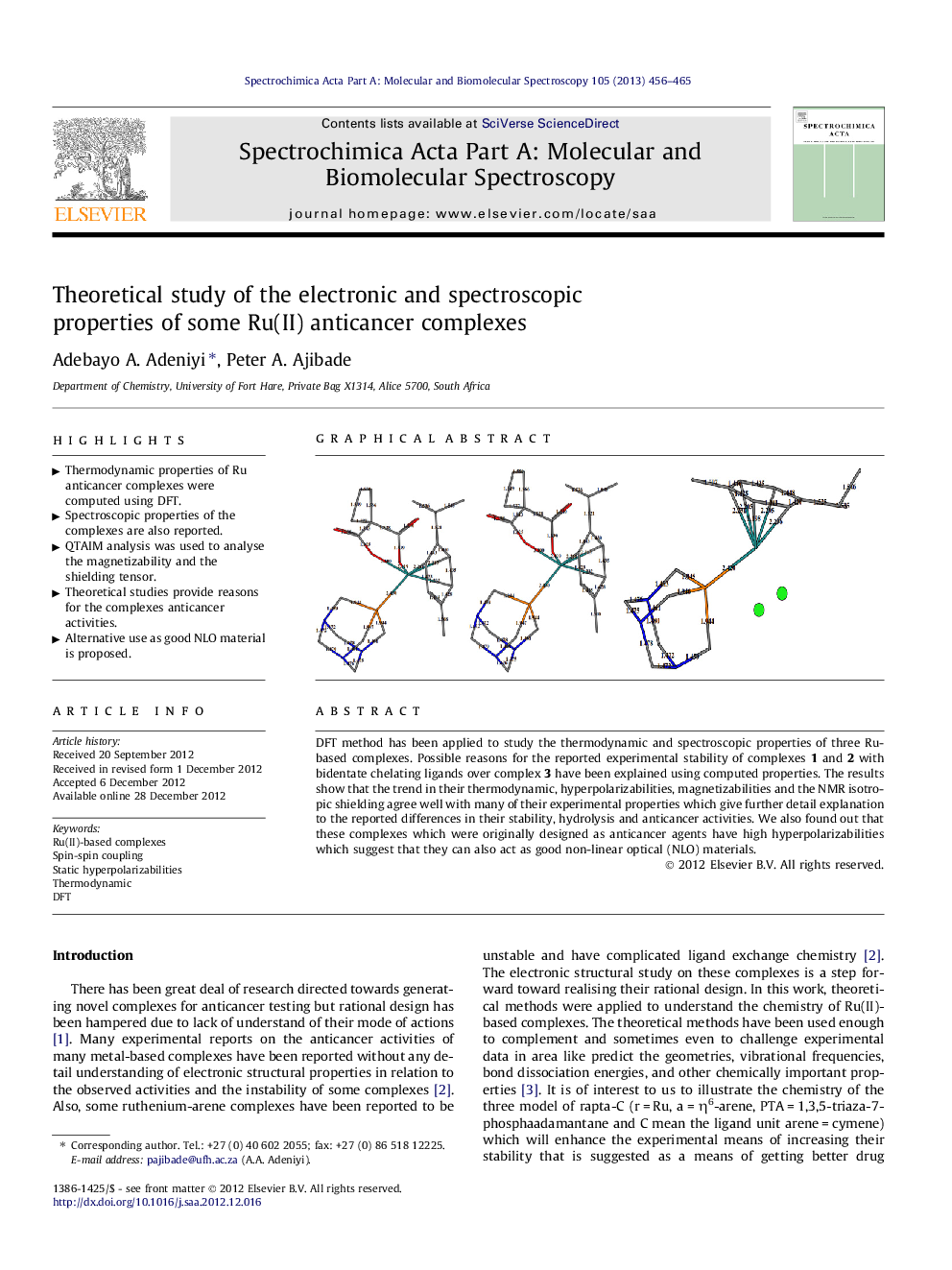| Article ID | Journal | Published Year | Pages | File Type |
|---|---|---|---|---|
| 1231865 | Spectrochimica Acta Part A: Molecular and Biomolecular Spectroscopy | 2013 | 10 Pages |
DFT method has been applied to study the thermodynamic and spectroscopic properties of three Ru-based complexes. Possible reasons for the reported experimental stability of complexes 1 and 2 with bidentate chelating ligands over complex 3 have been explained using computed properties. The results show that the trend in their thermodynamic, hyperpolarizabilities, magnetizabilities and the NMR isotropic shielding agree well with many of their experimental properties which give further detail explanation to the reported differences in their stability, hydrolysis and anticancer activities. We also found out that these complexes which were originally designed as anticancer agents have high hyperpolarizabilities which suggest that they can also act as good non-linear optical (NLO) materials.
Graphical abstractFigure optionsDownload full-size imageDownload as PowerPoint slideHighlights► Thermodynamic properties of Ru anticancer complexes were computed using DFT. ► Spectroscopic properties of the complexes are also reported. ► QTAIM analysis was used to analyse the magnetizability and the shielding tensor. ► Theoretical studies provide reasons for the complexes anticancer activities. ► Alternative use as good NLO material is proposed.
